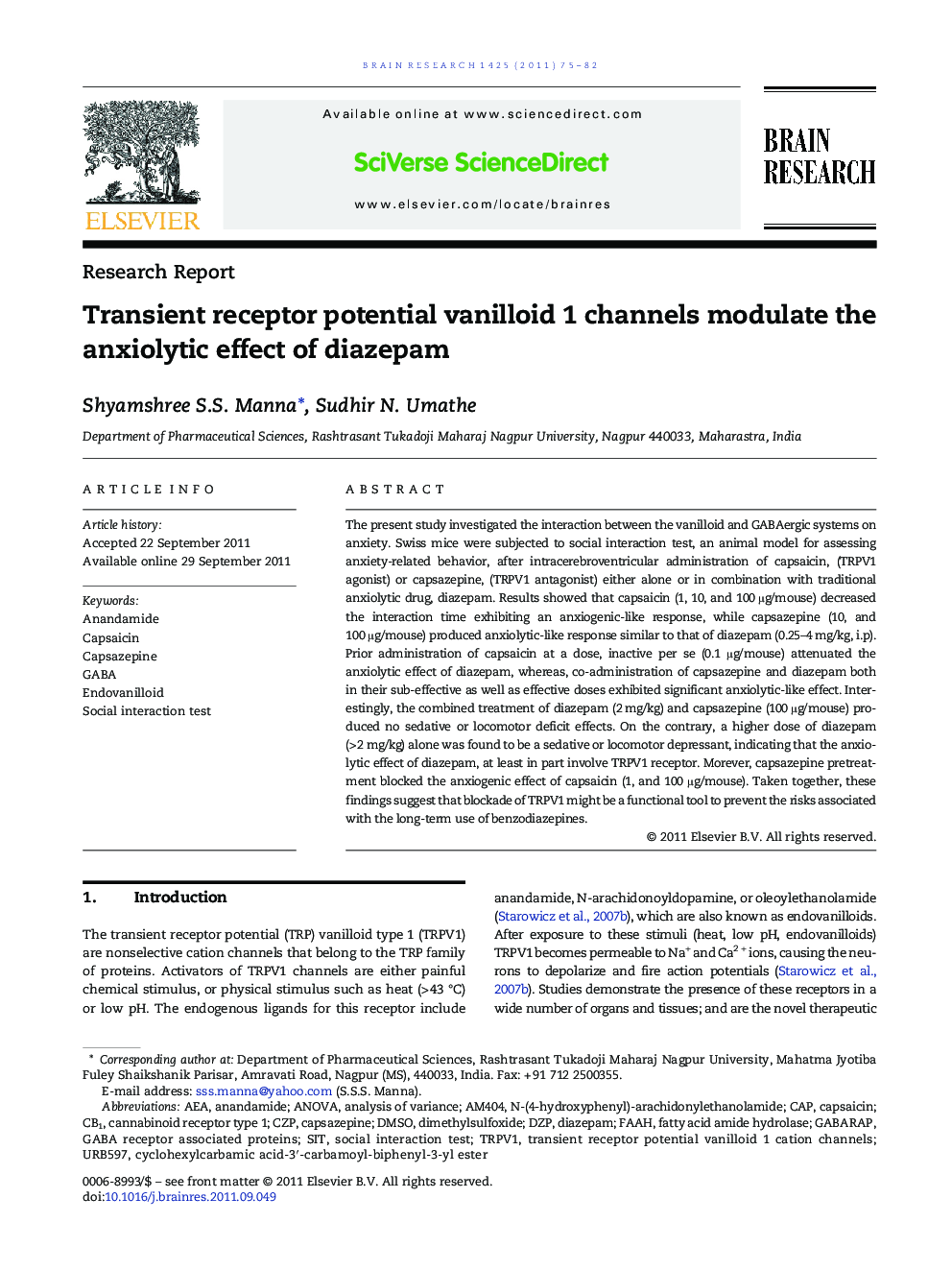| Article ID | Journal | Published Year | Pages | File Type |
|---|---|---|---|---|
| 6264621 | Brain Research | 2011 | 8 Pages |
The present study investigated the interaction between the vanilloid and GABAergic systems on anxiety. Swiss mice were subjected to social interaction test, an animal model for assessing anxiety-related behavior, after intracerebroventricular administration of capsaicin, (TRPV1 agonist) or capsazepine, (TRPV1 antagonist) either alone or in combination with traditional anxiolytic drug, diazepam. Results showed that capsaicin (1, 10, and 100 μg/mouse) decreased the interaction time exhibiting an anxiogenic-like response, while capsazepine (10, and 100 μg/mouse) produced anxiolytic-like response similar to that of diazepam (0.25-4 mg/kg, i.p). Prior administration of capsaicin at a dose, inactive per se (0.1 μg/mouse) attenuated the anxiolytic effect of diazepam, whereas, co-administration of capsazepine and diazepam both in their sub-effective as well as effective doses exhibited significant anxiolytic-like effect. Interestingly, the combined treatment of diazepam (2 mg/kg) and capsazepine (100 μg/mouse) produced no sedative or locomotor deficit effects. On the contrary, a higher dose of diazepam (> 2 mg/kg) alone was found to be a sedative or locomotor depressant, indicating that the anxiolytic effect of diazepam, at least in part involve TRPV1 receptor. Morever, capsazepine pretreatment blocked the anxiogenic effect of capsaicin (1, and 100 μg/mouse). Taken together, these findings suggest that blockade of TRPV1 might be a functional tool to prevent the risks associated with the long-term use of benzodiazepines.
⺠TRPV1 receptor agonist, capsaicin produced anxiogenic-like effect in social interaction test. ⺠Capsazepine, a TRPV1 antagonist exhibited an anxiolytic-like response. ⺠Combined treatment of diazepam and capsazepine exhibited anxiolytic effect with no locomotor deficits. ⺠Whereas, diazepam alone at high doses was a sedative or locomotor depressant. ⺠Suggesting, beneficial role of TRPV1 antagonists in the long-term use of benzodiazepines.
